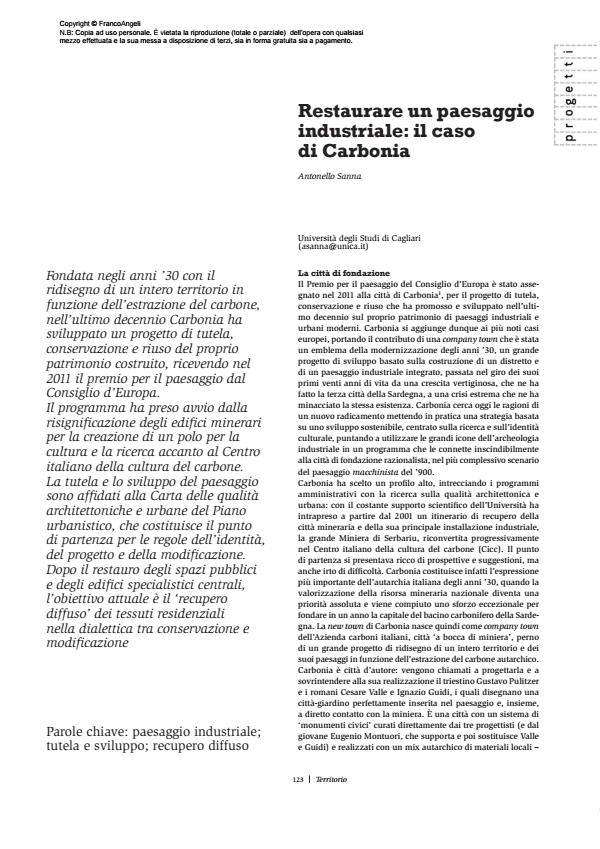Restaurare un paesaggio industriale: il caso di Carbonia
Titolo Rivista TERRITORIO
Autori/Curatori Antonello Sanna
Anno di pubblicazione 2012 Fascicolo 2012/62
Lingua Italiano Numero pagine 9 P. 123-131 Dimensione file 510 KB
DOI 10.3280/TR2012-062022
Il DOI è il codice a barre della proprietà intellettuale: per saperne di più
clicca qui
Qui sotto puoi vedere in anteprima la prima pagina di questo articolo.
Se questo articolo ti interessa, lo puoi acquistare (e scaricare in formato pdf) seguendo le facili indicazioni per acquistare il download credit. Acquista Download Credits per scaricare questo Articolo in formato PDF

FrancoAngeli è membro della Publishers International Linking Association, Inc (PILA)associazione indipendente e non profit per facilitare (attraverso i servizi tecnologici implementati da CrossRef.org) l’accesso degli studiosi ai contenuti digitali nelle pubblicazioni professionali e scientifiche
Established in the 1930s with the redesign of an entire area for coal mining purposes, Carbonia has developed a plan for the protection, conservation and reuse of its built heritage in the last decade, for which it received the 2011 award for landscape from the Council of Europe. The programme commenced with the change in the meaning of mining buildings to create a cultural and research centre to stand alongside ‘The Italian Centre for Coal Mining Culture’. The protection and development of the landscape was entrusted to the ‘Charter for architectural and urban quality’ contained in the Urban Plan, which constituted the basis for the rules governing identity, design and modification. After the restoration of the public spaces and the central specialist buildings, the current objective is the ‘widespread restoration’ of the residential fabric in a dialectic between conservation and modification.
Parole chiave:Industrial landscape; protection and development; widespread restoration
Antonello Sanna, Restaurare un paesaggio industriale: il caso di Carbonia in "TERRITORIO" 62/2012, pp 123-131, DOI: 10.3280/TR2012-062022